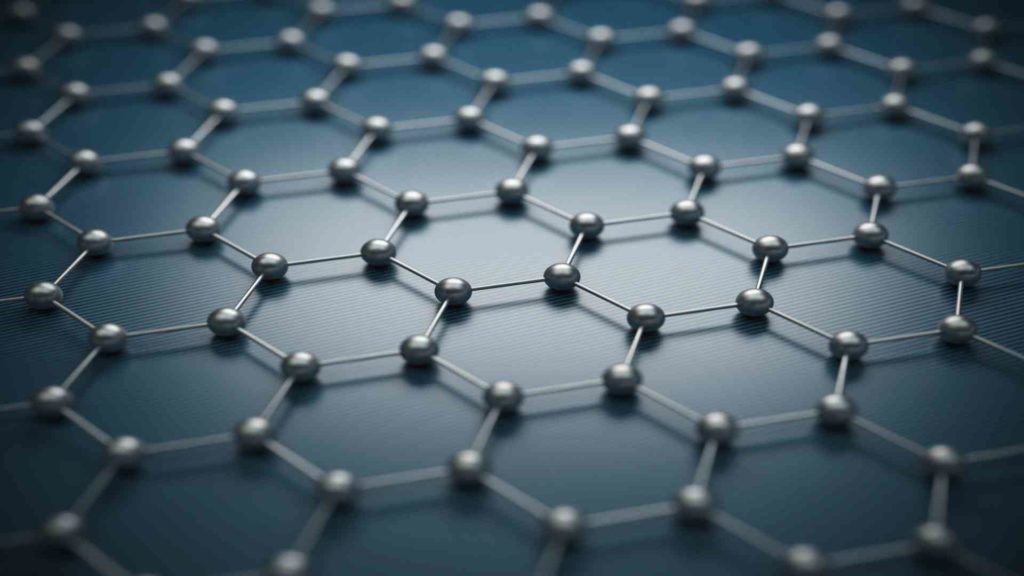Can Borophene Replace Graphene?
Let’s get to today’s topic. We’re going to look at borophene, a relatively new compound of boron, which is an innovative 2D mono atomic material that can rival graphene in terms of strength and flexibility. And it’s also cheaper to produce and a better conductor.
Borophene and Graphene

Borophene Compete with Graphene
What is graphene? Not so long ago, graphene was recognized as a prodigious material, able to transform the world of technology with its various uses in electronic applications, including RAM, (random access memory), displays, printed graphene for paper electronics and automobile batteries.
Graphene is a super strong, atomic thick sheet of carbon that can be shaped into tubes, balls and other various shapes. As it conducts electricity, scientists predict a new era of graphene based computer processing and a profitable graphene chip sector. The graphene industry was launched with a €1 billion investment by the European union.
This brave new graphene based world is still however, a long way off. The main drawback is that graphene takes a long time to develop and costs more than other materials.
Other difficulties with Graphene include its mechanical rigidity which makes it unsuitable for systems that require significant compression, stretching or torsion- tolerance. It has a band gap that makes it unsuitable for simple on-off switching.
Because of its oxidation susceptibility, it cannot be used as a catalyst in oxidizing environments. Furthermore, it may contain sharp edges that could tear cell membranes and cause them to malfunction. As a result, it has sparked excitement about other two-dimensional materials.
The most interesting of these is borophene which comprises a single layer of boron atoms that can create various crystallites. Let’s take a closer look at borophene.
Borophene does not have a long history. It’s a relatively new compound. In the 1990s scientists predicted its existence by running computer simulations, to explain how boron atoms may form a monolayer.
But it wasn’t until 2015 that this unique compound was created via chemical vapor deposition. In this process. a heated gas of boron atoms condenses over a cool surface of pure silver. The systematic arrangement of silver atoms forces the boron atoms into a similar pattern with each atom forming a flat hexagonal shape by connecting to as many as six other atoms.
A large number of boron atoms combine with only four or five other atoms,. however, resulting in voids in the structure. The voids pattern in borophene crystals actually gives them the distinct features. In scientific terms, borophene is defined as a proposed crystalline allotrope for boron or. a crystalline atomic monolayer of boron.
The atom’s hexagonal structure is highly similar to that of graphene carbon atoms, except they are boron atoms with an extra boron atom in the center of each hexagon.
A list of outstanding properties of borophene includes record high flexibility and higher stiffness to weight ratio than graphene, excellent conductivity of electricity and heat and also superconductivity, ability to catalyze decomposition of molecular hydrogen into hydrogen irons and water into hydrogen and oxygen ions.
It is lightweight and fairly reactive making it a promising candidate for storing metal ions in batteries; it can act as a reactant. It can also store more than 15% of its weight in hydrogen due to its adsorption properties and large surface area of atomic layers.
So why is borophene better than borophene? Well, both materials are closely related as their atomic structures are quite similar. With several scientific factors on the above-mentioned characteristics of this material, borophene is categorized as the best alternative that goes beyond the benefits and quality graphene provides.
To start with borophene is stronger and more flexible, an important attributes when considering the graphene is harder than diamond and it’s made entirely of carbon, one of the hardest elements that exist on the planet. Borophene is also a superconductor of electrical current, its unique crystalline structure formed by boron atoms is responsible for this property as the voids that remain between the atoms allowed boron to be superconducting.
Then there’s borophene’s ability to catalyse the decomposition of hydrogen and oxygen. Borophene has excellent catalytic effects in the hydrogen evolution reaction, the oxygen reduction reaction, the oxygen evolution reaction, and the CO2 electro reduction reaction according to a research team at the University of Xiamen in China. This may shape the future of water-based power cycles.
Nonetheless scientists must conduct intensive research before borophene may be used extensively. For instance, they have yet to discover a means to produce large scale borophene. Because of the materials reactivity, it is susceptible to oxidation and must be carefully protected.
And borophene like graphene is difficult to handle and expensive to produce because of the above features. However, chemists have a lot of faith that borophene has the potential to be the next great wonder material.
Current applications of borophene include uses in flexible electronics, as battery electrodes, in catalysis, in hydrogen storage and in gas sensors.
In flexible electronics, borophene can be used to fabricate devices that can be deformed and then returned to their original shape. Because morphine is conductive, it could be an excellent material for flexible electronic devices.
Battery electrodes: Borophene is a promising electrode material for lithium-ion and sodium ion batteries because of its large storage capacity, which results in a high power density and electro chemical performance.
Borophene, in recent study has shown the largest storage capacity of all the 2D materials studied.
Catalysis: Borophene is a catalyst used in hydrogen evolution, oxygen reduction, and carbon dioxide, electro chemical reduction. The electro chemical reduction of carbon dioxide in particular provides significant potential for improving climate change activities.
Hydrogen storage: Borophene has been proven to have a high hydrogen storage capacity due to the boron atoms low mass. The molecular hydrogen binding energy to the boron sheet is higher than graphene.
And finally in gas sensors, borophene can be used in gas- sensing applications for ethanol, carbon monoxide phosgene and formaldehyde due to its gas absorption capabilities. It also has unique electronic structures and large surface area to volume ratios. So make it a perfect candidate for developing gas sensors.
Finally, let’s have a look at future research into morphine. When proper temperature and design changes are made, borophene can be shaped into various forms as in a scanning tunneling microscope. Some of these are adjusted to be smooth while others are corrugated, similar to the ridges on a vinyl record.
This corrugated form of borophene outperform graphene as an electrical conductor. One research team is conducting additional research into this and we look forward to more data which should be accessible soon.
A link to the research is in the original article, found on borates today.
The next fundamental challenge is to demonstrate a freestanding sheet of this material that opens up a lot of science and engineering possibilities.
“Boron reacts with nearly everything around it”, says one scientist at Kaiserslautens Technical University. However, the chemical nature of borophene may make it easier to work with than other 2D sheet materials.
And according to another scientist, Akinwande, cooled borophene could be a superconductor. a material that conducts electrical charge with zero resistance. However, another 2D material, namely aluminium, is on the horizon and has the potential to be more conductive than both graphene and borophene.
????Clearly, the world of nanomaterials is experiencing a period of rapid development.
And that’s all from Borates Today. For more information on borophene and graphene, please refer to the Borates Today website. Thanks for listening!





